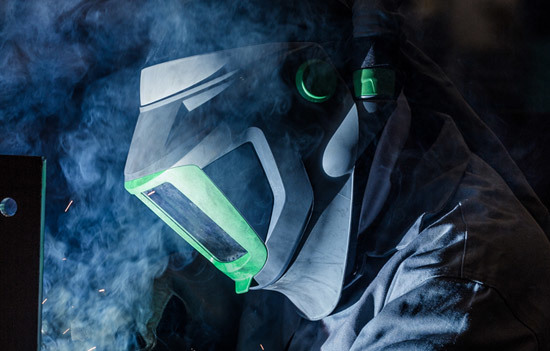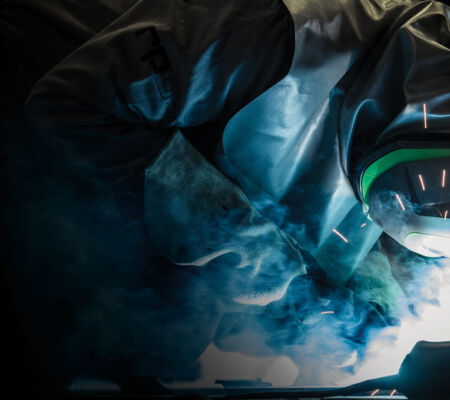
You might be breathing in more smoke and fume than you think.
You’ve finished your shift, you’re dirty, but that’s okay because you can wash this off. Then you blow your nose and thick black snot comes out onto the white tissue. Does this sound familiar?
Think of your nostrils as the filters in a respirator, this is the first place where the oxygen you are breathing enters your body. Unlike filters, your nostrils are not designed to block industrial levels of contaminants. Your welding environment is riddled with gases and particulates, and every time you breathe in, these are making their way into your respiratory system. Relying solely on your noses' natural filtration process to protect you is a dangerous position to be in. As these gases and particulates accumulate in your respiratory system they slowly start to affect your health, putting you at risk of developing asthma, metal fume fever, cancer, emphysema, kidney failure, lead poisoning, anemia, and manganism (Parkinson’s disease-like syndrome).
Who decides what protection I need?
The Occupational Safety and Health Administration (OSHA) is the governing body for all aspects of industrial workplace health and safety. They create the standards that businesses must comply with, including standards for respiratory protection. It is a requirement that respiratory protective equipment (RPE) is used when environments have particulates and gases above the permissible exposure limits (PEL) which are specified in the respiratory protection standard. Workplaces that do not implement these requirements not only put their workers at risk of serious health issues but also face extensive citations and fines for each violation, per worker, per day that they are non-compliant.
You might be compliant, but you can still be at risk
The standards are constantly changing as more information around the effects of exposure limits are discovered. Welders have been found to show signs of neurological problems similar to Parkinson’s Disease even when working below the OSHA standards. This is a scary thought. Even when we think we’re protected; we are still at risk of these health effects. Every time you lift your visor, or wear a bandana around your mouth and nose, or have stubble under that N95 you’re wearing you are at risk of breathing in the contaminants in your environment.
Looking after our lungs
There are two types of respirators that reduce the black snot effect, tight-fitting negative air pressure and loose-fitted positive air pressure. The tight-fitting functions by your lungs drawing the air through its filters to stop the contaminants before entering your respiratory system. These require fit and pulmonary function testing for the user to be compliant. The issues with tight-fitting respirators are that the user must always be clean-shaven, even with stubble this can break the seal and particulates in the welding fume can make their way into your lungs. These also require the user to have fit lungs, so anyone with underlying breathing difficulties like asthma cannot use one. The respirator itself can also get in the way of the welding visor when operating.
The other form of protection is a loose-fitting respirator. These function with either a powered air purifying respirator (PAPR) or a supplied air respirator (SAR) which flows directly into the headtop. Both of these provide positive pressure inside the respirator, enabling the user to breathe as they normally would. PAPRs filter the air entering your respirator and supplied air delivers air from a compressor source outside the welding environment. The advantage with loose-fitting respirators is no fit testing is required so users can have facial hair, piercings and go through weight gain/loss without compromising their respiratory protection. These can also feature a built-in welding visor that can be lifted to look at their work without exposing themselves to the hazards in their environments.

Where to next?
Respiratory protection is constantly advancing and improving to help operators perform at their best. What was once seen as a burden is now being seen as a necessity. With the right respiratory protection, it can help you work for longer, work smarter, breathe easier and see more of your work.
You’re already wearing a visor to protect eyes, why not look after your lungs at the same time? The next time you look down at the black snot in that tissue, think about what that is doing to your lungs and what you can be doing to change this.
